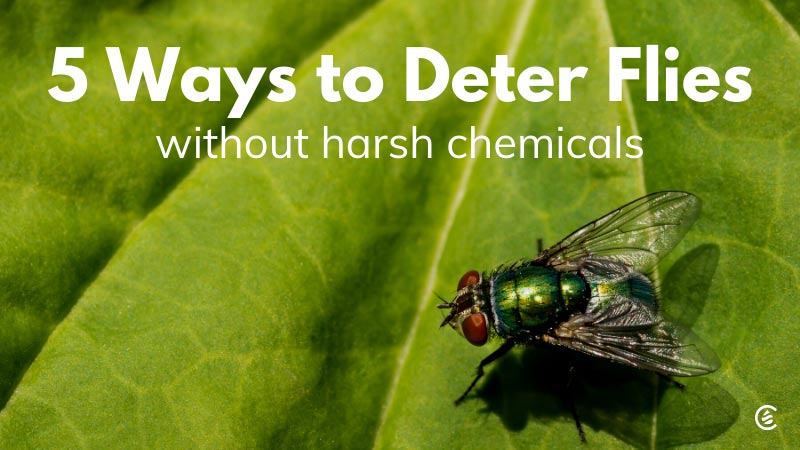
They get into everything. They're disgusting. They carry disease. And some even bite—and bad (we're talking draw-blood-bad)! Here's how to get the fly-free spring and summer you deserve, without resorting to chemicals that could harm your family and pets.
1. MAKE YOUR OWN NATURAL FLY TRAP
A quick and easy fly trap can be made by adding a few drops of natural dish soap to a saucer filled with apple cider vinegar.
The vinegar attracts the flies, the soap makes it so they can’t escape after landing. Simply place the trap in fly trouble areas and leave overnight.
2. SEAL YOUR HOME
If you’re commonly spotting flies indoors, chances are they’re getting inside through something other than just your front and back doors. The usual culprits are gaps around doors and windows, faulty screens, poor weather stripping, old caulking, etc.
Finding these potential entry points and sealing them is often enough to substantially reduce a serious indoor fly problem.
3. ELIMINATE FLY ATTRACTANTS
From dirty dishes and spills to unsealed trash cans and pet waste, our homes and yards are filled with items that attract flies. Being diligent about household cleanliness is arguably the most important factor when it comes to fly control. At the minimum, consider the following:
- Never leave dirty dishes in the sink
- Clean up food and drink spills immediately
- Seal all food in tightly closed containers
- Avoid leaving pet food out after feedings
- Clean up pet waste as soon as possible
- Cover and seal all trash cans, both inside and outside
- Remove sources of standing water outside, such as leaky faucets, buckets, etc.
4. USE FLY-DETERRENT PLANTS
Lavender, basil, lemongrass, mint, and rosemary are all said to repel flies.
Place these fragrant plants and herbs near windows, doorways, other fly hangouts, and where you and your family spend the most time outside.
5. GOOD OLD FASHIONED FLYPAPER
It’s not elegant, it’s not pleasing to the eye, but it works.
It’s simple: Hang flypaper in the areas around your home with the most fly traffic. Replace as needed. This approach alone won’t solve a fly problem completely, but it will greatly reduce the number of flies you see indoors.

